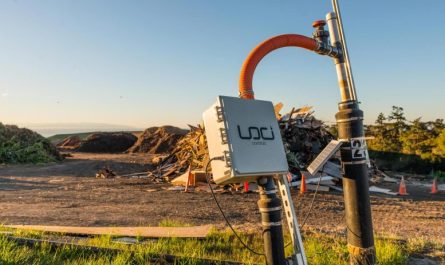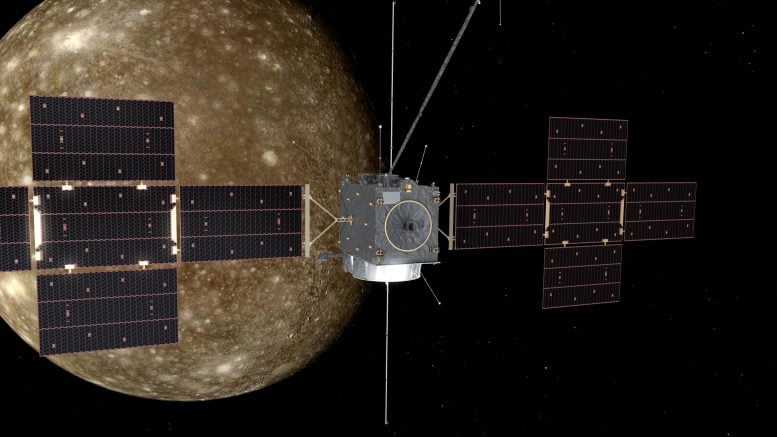
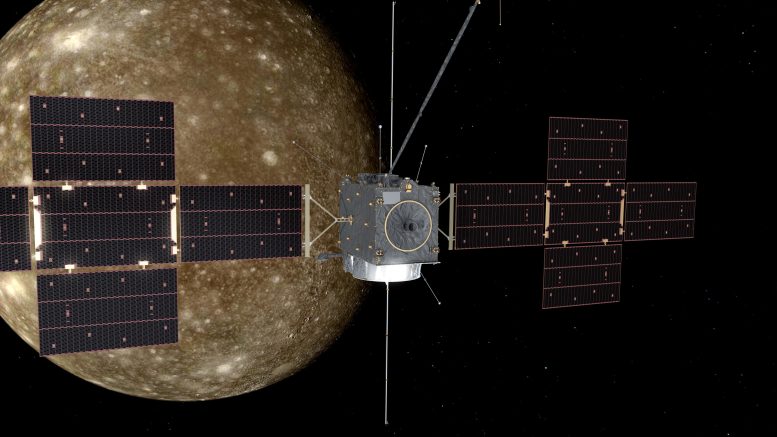
ESA’s Jupiter Icy Moons Explorer – Juice – will catch its first glimpse of ancient, cratered Callisto in June 2032, going on to whizz past the moon 21 times before making a final flyby in 2034. During these close encounters, Juice will collect valuable scientific treasures about the moon. Credit: ESA
ESA tested the Juice spacecraft’s navigation software on an engineering model to prepare for a 2031 flyby of Callisto, ensuring it can autonomously navigate despite significant communication delays.
What Happened?
Seven years from now, in April 2031, ESA’s Juice mission will fly past Jupiter’s moon Callisto, offering scientists a tantalizing glimpse at the mysterious, cratered alien world.
That might seem far off, but in the world of spacecraft operations, it is never too early to start preparing.
Teams at ESA’s ESOC mission operations center in Germany recently ‘tricked’ Juice’s engineering model into thinking it was already at Callisto in order to put the mission’s autonomous navigation software to the test.
Why Was This Necessary?
When Juice arrives at Callisto, the large communication delay between Earth and the Jupiter system will mean that it cannot afford to wait for a reply from mission control if something goes wrong.
While we have a good idea of where Callisto will be in April 2031, we don’t know its position precisely enough to guarantee that Juice’s trajectory will take it through Callisto’s gravitational field in exactly the right way to line it up perfectly for high-accuracy scientific measurements.
In the time it takes to send and receive messages between Jupiter and Earth, the direction that Juice is pointing its remote sensing instruments could drift so far off course that science could be missed, and key mission objectives impacted.
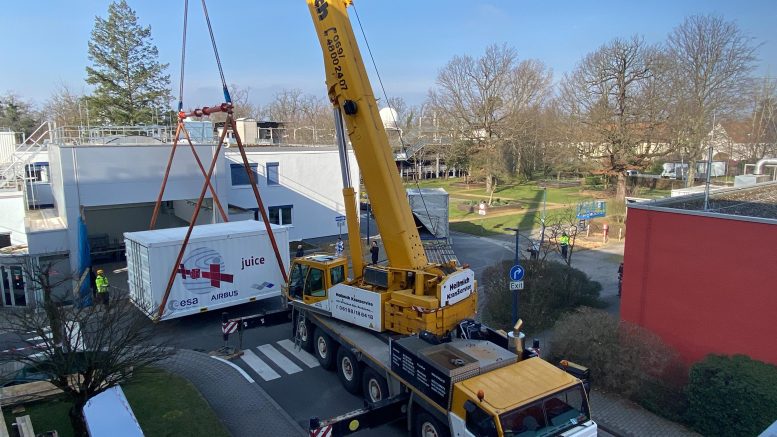
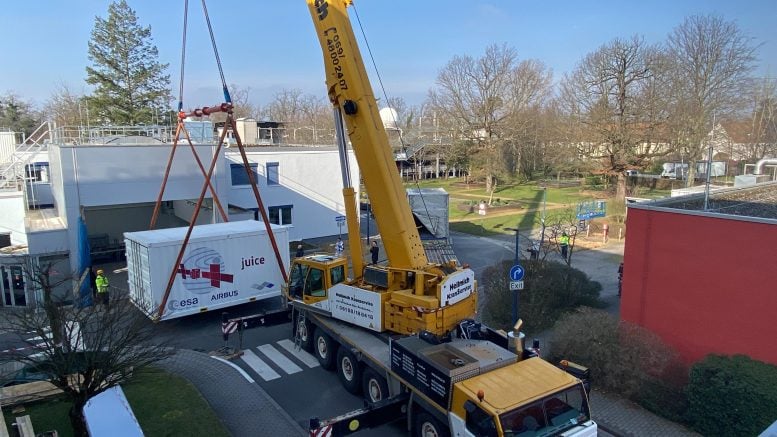
ESA’s Juice spacecraft is well on its way to Jupiter but its ‘twin’ recently completed a special journey of its own and has arrived at its new home at ESA’s ESOC mission operations center. Credit: ESA
Even a tiny discrepancy could be terrible for science, as some of Juice’s instruments need to be pointed at specific regions of Callisto within a tiny fraction of a degree in order to make their measurements.
“We need Juice to be able to react with its own ‘eyes’ and its own ‘brain’,” says Ignacio Tanco, Juice Flight Operations Director. “When Callisto appears in the field of view of its navigation camera, it needs to be able to identify important features on the moon’s surface, rotate itself to point its instruments at them, and then continue rotating to keep them in view as it flies past.”
What Did You Do?
Teams at ESA fly spacecraft to new and exciting destinations across the Solar System. To train for important activities and to help diagnose and solve issues experienced by spacecraft millions of kilometers away, they use a one-of-a-kind replica that remains on Earth. This ‘engineering model’ is an exact copy of the hardware, software, electrical systems and instruments that are sent into deep space.
The Juice team used its engineering model to test the autonomous navigation software that will keep Juice on track at the Jupiter system.
They ‘tricked’ it into believing it was at Callisto by projecting a series of images of the moon onto its faithful replica of the spacecraft’s navigation camera to see how it would respond.
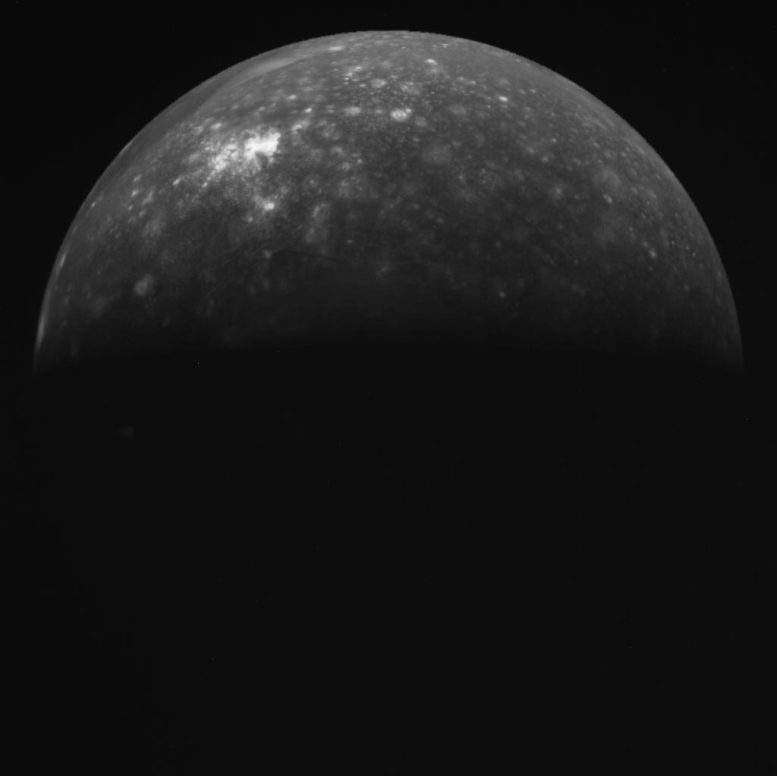
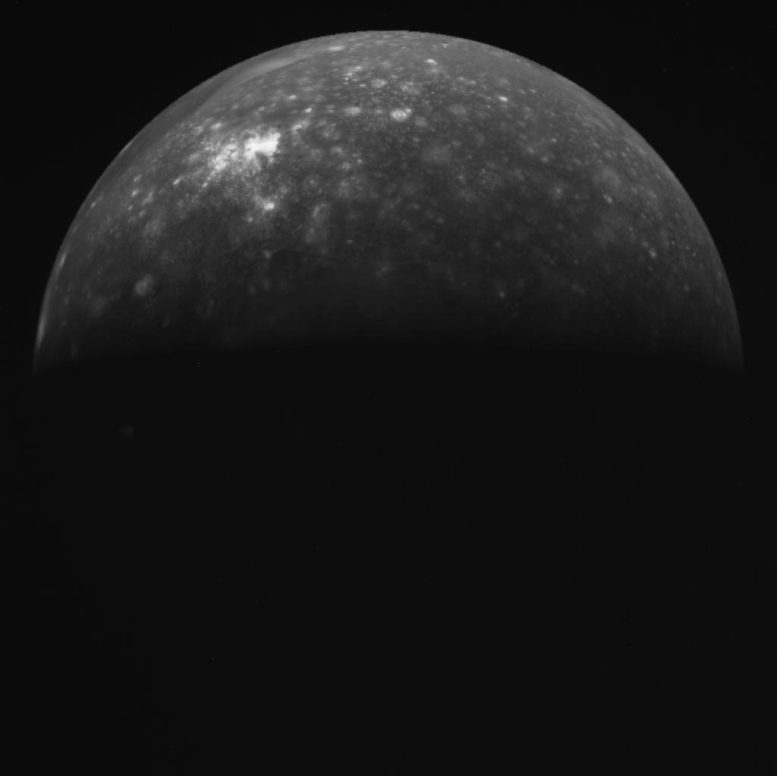
One of the computer-generated images of Jupiter’s moon Callisto that was used to test the capabilities of Juice’s engineering model in March 2024.
When Juice’s flight model passes the real Callisto in 2031 and offers scientists a tantalising glimpse at the mysterious, cratered alien world, this is how it will appear to the spacecraft’s navigation camera. Credit: ESA/Airbus
These high-resolution images, generated by a computer model, depicted Callisto in the exact orientation and phase that Juice will see it when it arrives seven years from now.
“It was not as simple as preparing images in advance and playing a video in front of the navigation camera,” says Giulio Pinzan, ESA Spacecraft Operations Engineer, who oversaw the activity.
“The navigation software had to react to these images. If it noticed that it was approaching Callisto at the wrong angle or facing slightly the wrong direction, it had to attempt to correct these errors without our help.”
“That meant the view of Callisto had to react to the spacecraft’s actions in real-time. We effectively strapped an immersive virtual reality headset to Juice’s camera and let it move around independently inside this virtual space.”
How Did It Go?
The teams from ESA and Juice’s manufacturer, Airbus, allocated three days for the Callisto flyby test. The spacecraft operators, scientists and mechanical, electrical and software engineers all expected to spend days encountering and solving issues before finally achieving a clean flyby in which Juice reacted exactly as they wanted.
To make this test even more challenging, they didn’t have access to one of the most important tools in the spacecraft operations toolkit. Usually, before a complex test like this is run on the spacecraft’s physical engineering model, it is first run on an entirely digital software simulator of the spacecraft that has no physical parts.
This is where most issues are encountered and resolved, and tests are only run on the physical engineering model when operators already have a good idea of what to expect.
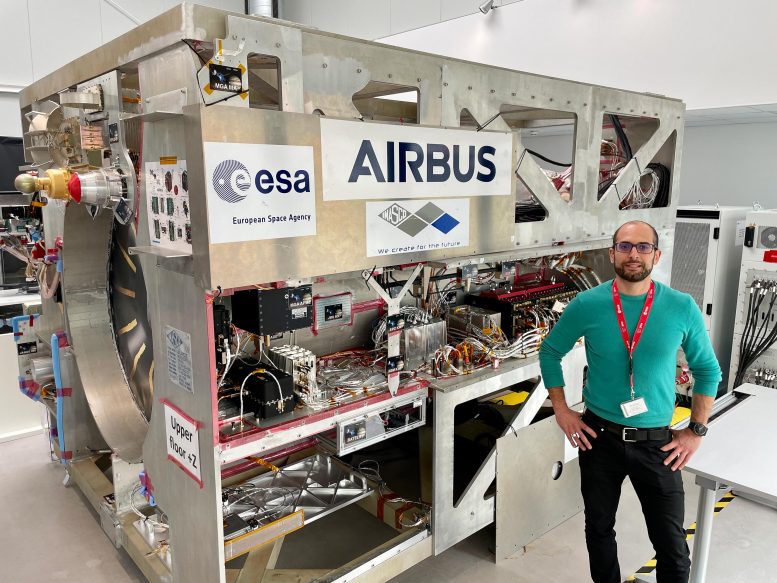
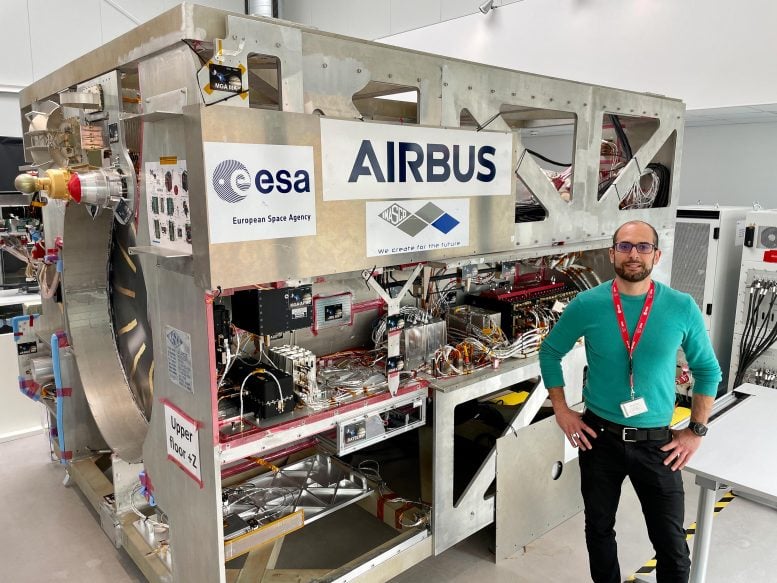
ESA Spacecraft Operations Engineer Giulio Pinzan in front of the Juice engineering model at ESOC.
Engineering models are used to test spacecraft maneuvers and to diagnose and solve any issues encountered by the flight model millions of kilometers away. The Juice engineering model lives in a climate-controlled facility inside the building next to the one containing the flight model’s control room. Credit: ESA
“But this scenario is so complex that it is currently impossible to simulate with the Juice software simulator,” says Giulio Pinzan. “We were flying into this test completely blind.”
Yet, despite their expectations, the team succeeded on the very first attempt on day one. Juice’s navigation software locked on to the correct regions of Callisto, kept its instruments pointed directly at them, and safely maintained the correct trajectory as it navigated through the demanding flyby.
“We really have to praise our Flight Dynamics team, in particular,” says Giulio. “Their mathematical calculations were spot on and enabled us to cruise through a clean flyby on the very first attempt despite the lack of experience they would usually gain from experimenting with the software simulator. It was amazing, really. They surprised even us.”
“The Airbus team also did a remarkable job setting up the engineering model in time for the test, while at the same time providing us with all the details that we needed to operate the autonomous navigation system correctly.”
This video shows Juice performing a flyby of the Earth-Moon system. Known as a Lunar-Earth gravity assist (LEGA), this is a world first: by performing this maneuver – a gravity assist flyby of the Moon followed just 1.5 days later by one of Earth – Juice will be able to save a significant amount of propellant on its journey. Credit: ESA/Lightcurve Films/R. Andres
What Happens Next?
The Callisto flyby is one of the most demanding scenarios that Juice will face and is one of the most difficult to set up and carry out with the engineering model.
The model was transported from Airbus in France to ESOC in Germany in February. With the successful completion of this final test, it is now fully set up, the ESA teams are fully trained on how to use it, and it has officially been handed over.
The Juice team now need to confirm that the flight model behaves in exactly the same way as the engineering model by carrying out a similar test in space. However, the only opportunities to track a large object with Juice’s navigation camera will come during its planetary flybys.
The upcoming lunar-Earth gravity assist in August this year is not an option for this test. During this double flyby, Juice will swing past the Moon and then Earth less than 24 hours later in order to steal energy from both bodies in quick succession. It is a very delicate maneuver that has never been attempted before and all hands will need to be ready to react to any anomaly at a moment’s notice.

